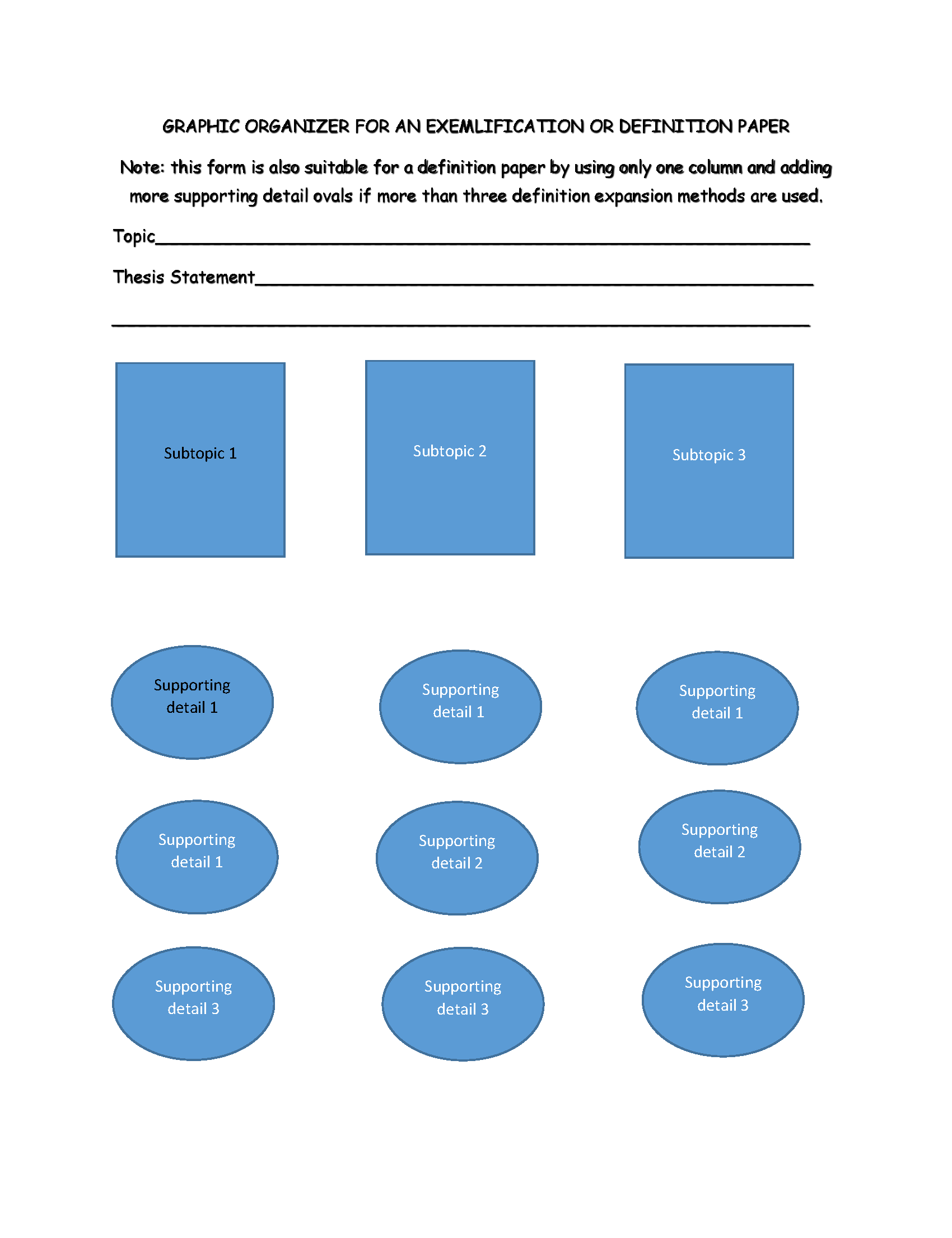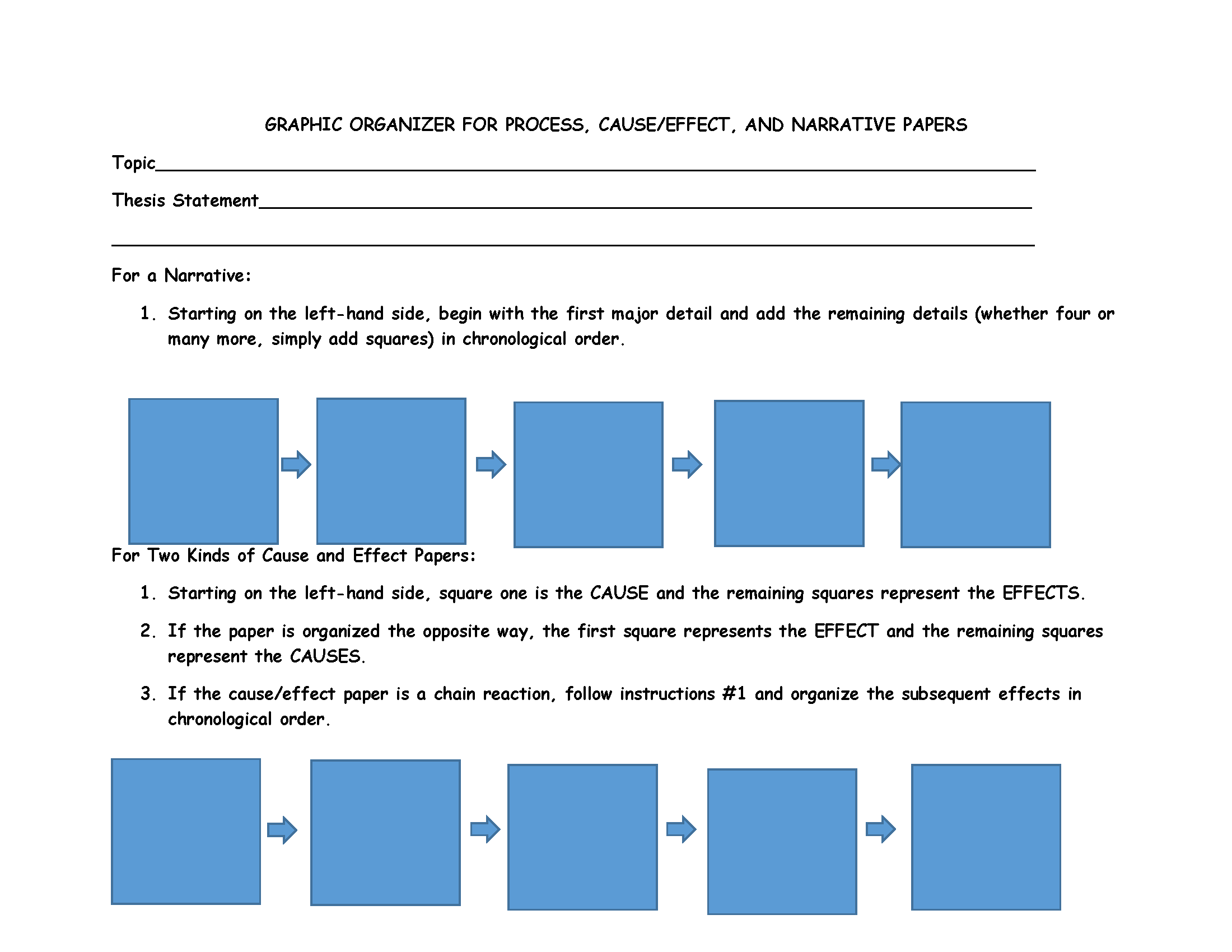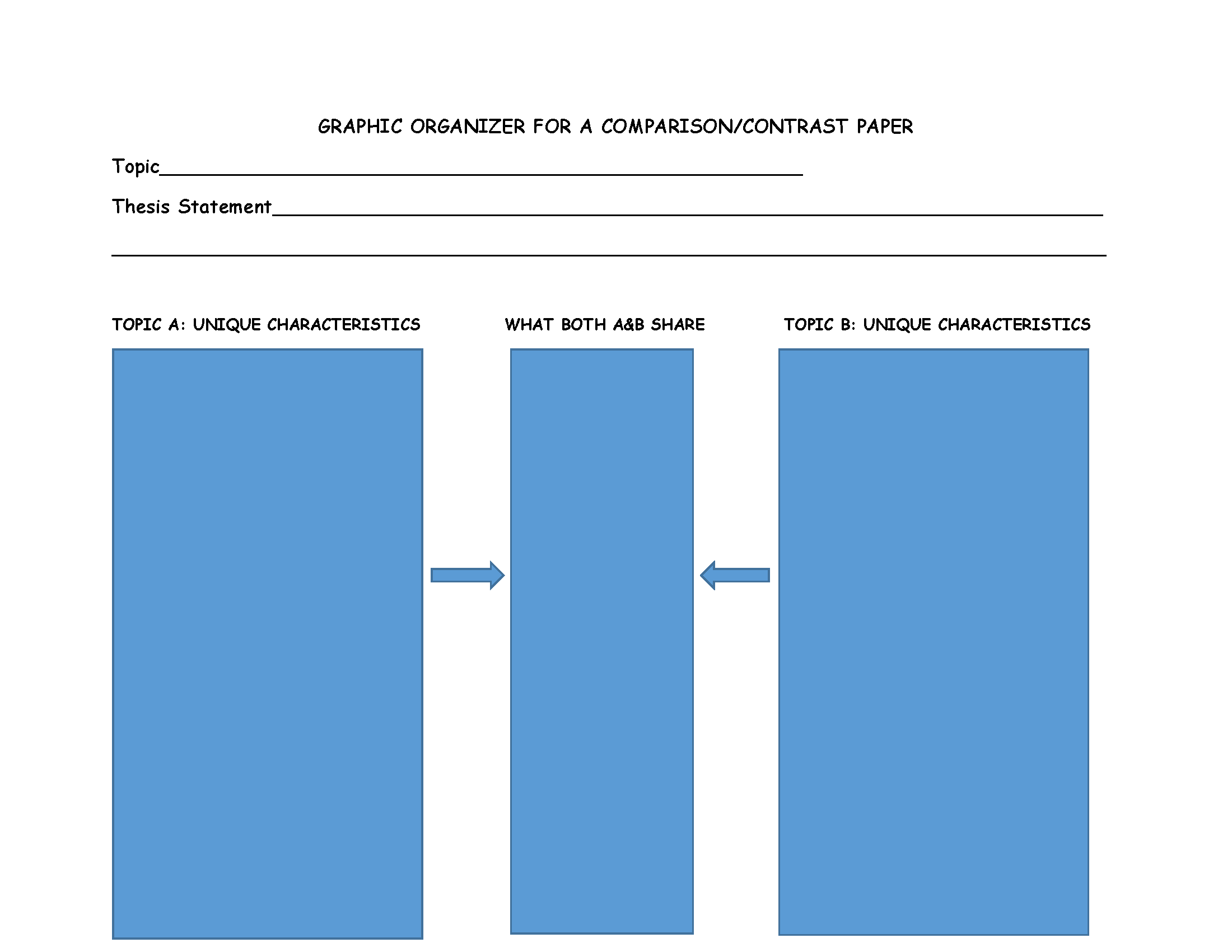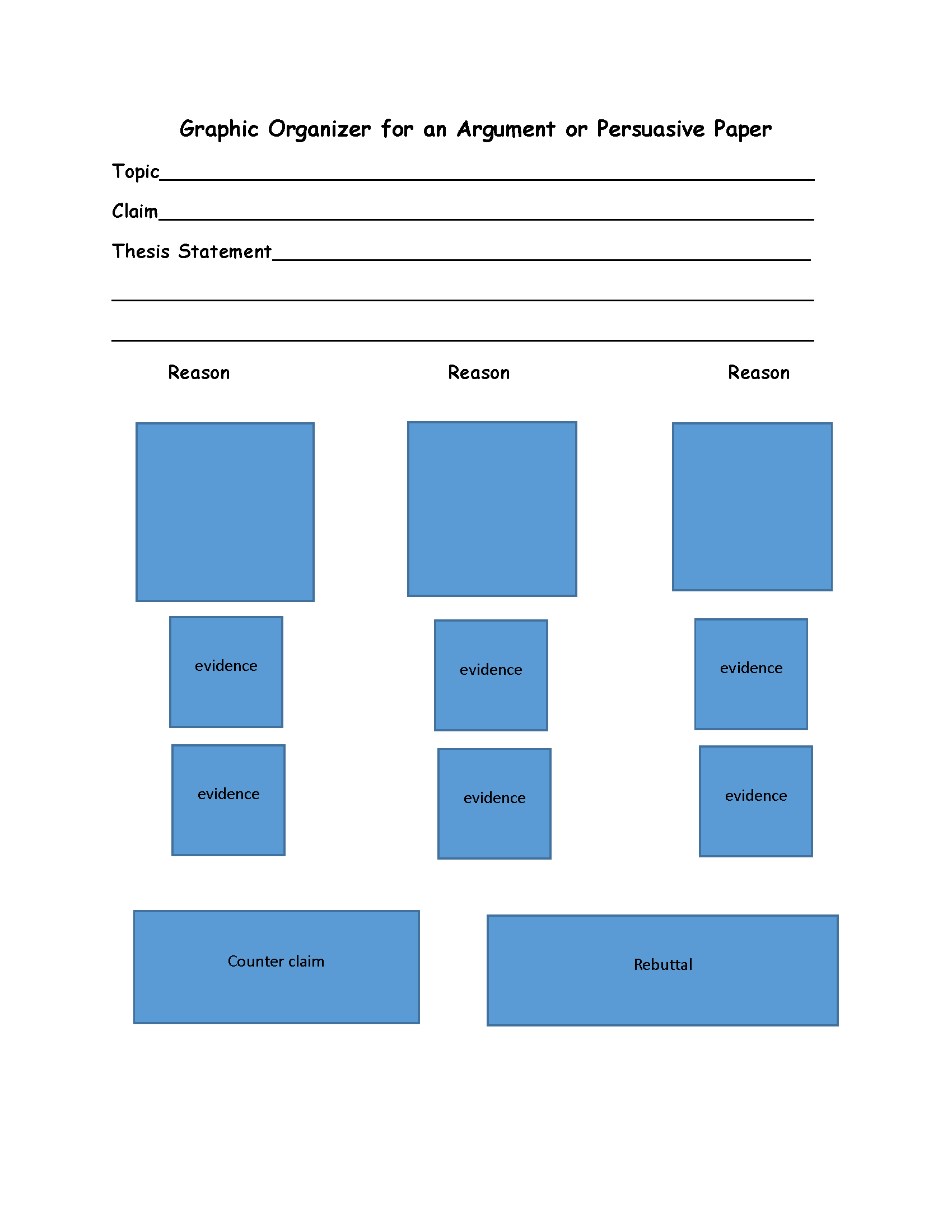GRAPHIC ORGANIZERS for Reading/Writing Patterns
Graphic Organizer for Exemplification or Definition Papers for Lesson 2.4

For Lesson 2.2 Graphic Organizer for Narrative, Process, and Cause and Effect Papers

2.3 Graphic Organizer for a Comparison and Contrast Paper

2.4 Graphic Organizer for an Argument or Persuasive Paper


